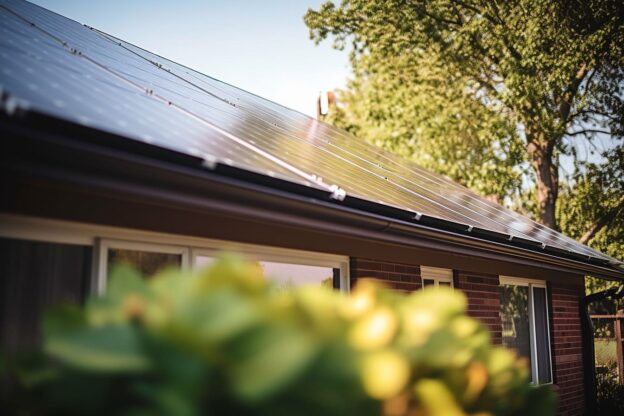Solar panels, also known as photovoltaic (PV) panels, are devices that convert light from the sun into electricity. They are made up of photovoltaic cells, which are made of semiconductor materials such as silicon.
When sunlight hits a solar panel, it causes the electrons in the semiconductor material to become excited, creating a flow of electricity. This flow of electricity is then directed into an inverter, which converts the direct current (DC) electricity produced by the solar panel into alternating current (AC) electricity, which is the type of electricity used in homes and businesses.
The efficiency of a solar panel is determined by the amount of sunlight it can convert into electricity. The higher the efficiency, the more electricity a solar panel can produce. Currently, the most efficient solar panels on the market have an efficiency of around 22%.
Solar panels can be used in both small and large scale applications. Residential homes can use solar panels on their roofs, while large solar farms can be built to provide electricity to entire communities.
One of the major advantages of solar energy is that it is a clean and sustainable source of energy. It does not produce any emissions or pollutants, making it a much more environmentally friendly option compared to fossil fuels. Additionally, the cost of solar panels has dropped significantly in recent years, making it a more accessible option for a wider range of people.
Solar panels require very little maintenance and have a long lifespan, typically lasting between 25-30 years. They are also designed to withstand extreme weather conditions, such as high winds and heavy snowfall.
Solar panels are a reliable and efficient way to generate electricity from the sun. With continued research and development, it has the potential to play a significant role in reducing our dependence on fossil fuels and combatting climate change. For those considering solar energy, it is important to consult with a professional to determine the best solar panel system for their specific needs and to ensure proper installation and maintenance.

